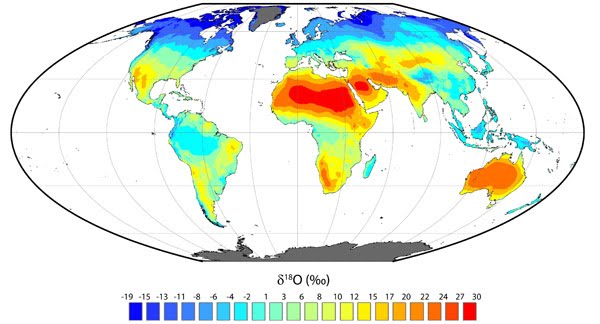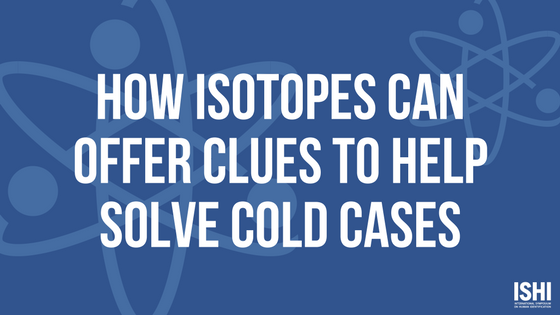It was a case that shocked those living in London in 2001. That September, the torso of a five year-old boy had been discovered in the River Thames. Named Adam by detectives, the boy’s head and limbs had been expertly removed so that identification had been impossible. While detectives suspected Adam had been the victim of a ritual killing, and a DNA profile had been established, no one had come forward to claim or give an identity to the boy.
Traditional forensic methods could only take investigators so far, so they knew they needed to take a new approach. It was Professor Ken Pye, a forensic geologist from Royal Holloway, University of London, that suggested a new method – using stable isotopes to determine Adam’s origins.
Written by: Tara Luther, Promega
As you may recall from chemistry class, isotopes are atoms that have the same number of protons, but differing numbers of neutrons. Therefore, they have a different atomic mass, but the same chemical properties.
Our bodies are made up of isotopes, and looking at the isotopes found in hair, fingernails, bones, teeth, or muscle tissues can tell investigators much about where and how a person lived their life. Hair grows approximately one centimeter per month, so a hair strand may provide an investigator with a year’s worth of data. Other tissues like teeth, bones, and muscles change little over time, so looking at isotopes found in these locations paint a greater portrait of an individual.
An investigator gains various clues as to where a person has been and how they lived their life by looking at different isotopes in their body. Oxygen isotopes that fall from rainclouds will accumulate in the drinking water that is ingested. As you can see from the map below (called an isoscape), the oxygen isotopes will fall in predictable locations, so looking at what isotope is found in hair or fingernails can tell investigators a lot about where a person has been. Carbon and nitrogen isotopes can tell investigators about a person’s diet. Carbon isotopes come largely from plant tissues, and vary depending on the CO2 found in the atmosphere that a plant uses to photosynthesize. Nitrogen isotope levels vary depending on if a person is a vegan, vegetarian, or omnivorous. Those who do not eat meat will have less nitrogen-15 than those who eat meat on a regular basis.

According to Wolfram Meier-Augenstein, a professor and principal scientist at the James Hutton Institute, hydrogen and oxygen in hair and fingernails are typically the first to be analyzed. Recently, it was discovered that by comparing carbon-12 to carbon-13 in hair shafts, investigators may be able to uncover a person’s age, sex, BMI, diet, and exercise habits.
While none of this on its own is enough to identify an individual or solve a case, isotope analysis can prove to be a useful tool when used in combination with other forensic analyses. In the case of Adam, looking at strontium levels in his bones pointed investigators to a portion of Africa, including Nigeria and surrounding regions. This was deemed to be too large an area to be of much use, so investigators travelled to Nigeria and collected bone samples from humans and animals to analyze strontium levels and were able to pinpoint Adam’s place of origin to a large stretch in Nigeria, with the best samples coming from Benin City.
Investigators then returned to the area armed with swabs and collected DNA samples from anyone who had lost a family member of Adam’s age. This case remains ongoing, though an unlikely confession by Adam’s former caretaker has provided additional clues as to what really happened.
Currently, there are some limitations that exist to using isotope analysis. The first hurdle is that a machine called a mass spectrometer is required, and as the cost for the machine is quite high, they are not readily available. When they are, it takes a specially trained scientist to interpret the data.
A company named IsoForensics, based in Utah, is on the cutting edge of isotope analysis, and is working on creating a series of Isoscapes – predictive maps like the one above that show the geographic origins of a particular isotope. Perhaps one day in the future, these maps will become more commonplace, and can be used as one more tool investigators have at their disposal.
WOULD YOU LIKE TO SEE MORE ARTICLES LIKE THIS? SUBSCRIBE TO THE ISHI BLOG BELOW!


